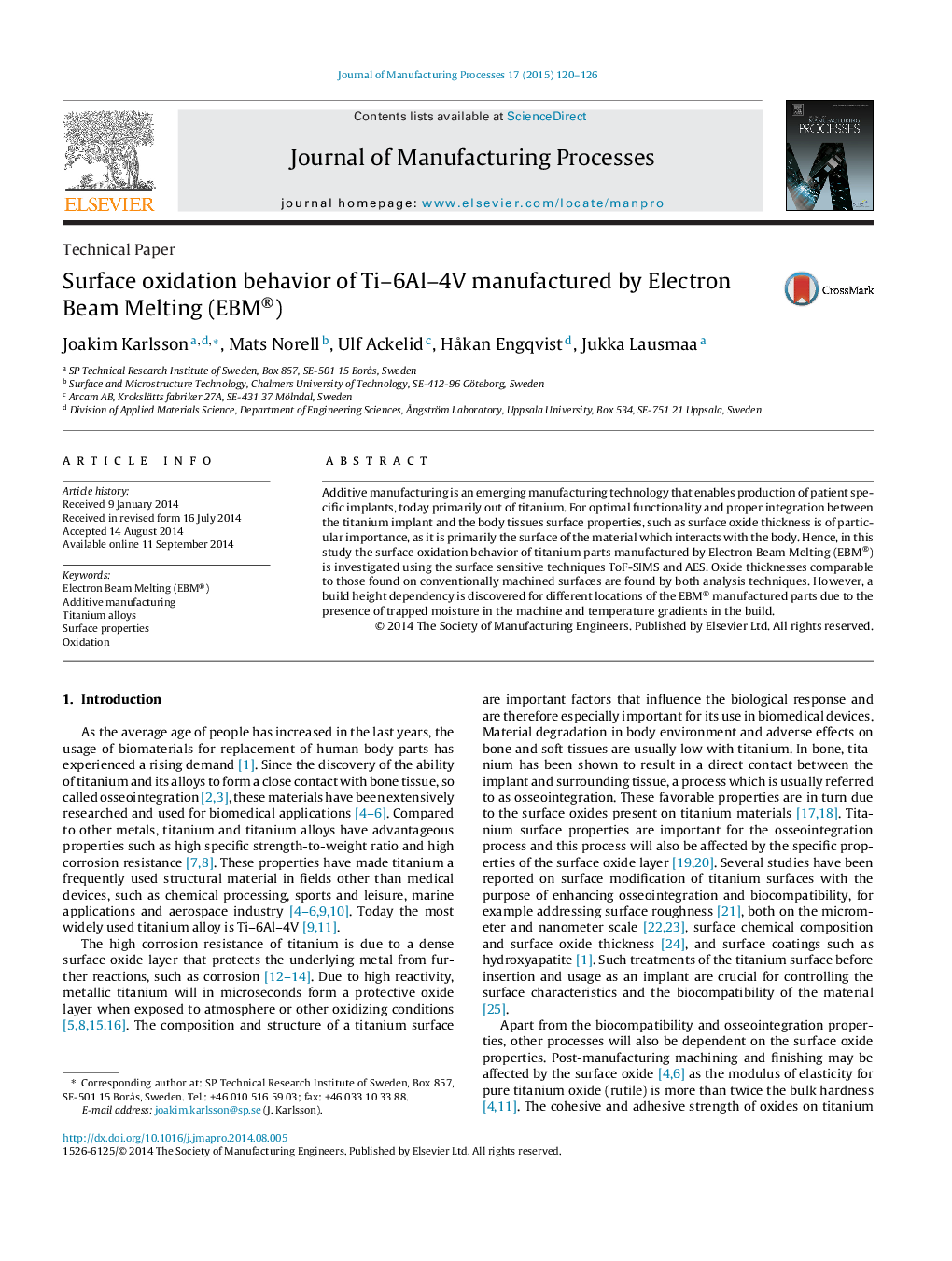| Article ID | Journal | Published Year | Pages | File Type |
|---|---|---|---|---|
| 1697003 | Journal of Manufacturing Processes | 2015 | 7 Pages |
•An oxidation dependency is found in the Electron Beam Melting (EBM®) process.•The surface oxide thickness is dependent on part build height.•The surface oxide of EBM built parts are comparable conventional processes.•The oxidizing species are primarily released water molecules.
Additive manufacturing is an emerging manufacturing technology that enables production of patient specific implants, today primarily out of titanium. For optimal functionality and proper integration between the titanium implant and the body tissues surface properties, such as surface oxide thickness is of particular importance, as it is primarily the surface of the material which interacts with the body. Hence, in this study the surface oxidation behavior of titanium parts manufactured by Electron Beam Melting (EBM®) is investigated using the surface sensitive techniques ToF-SIMS and AES. Oxide thicknesses comparable to those found on conventionally machined surfaces are found by both analysis techniques. However, a build height dependency is discovered for different locations of the EBM® manufactured parts due to the presence of trapped moisture in the machine and temperature gradients in the build.
